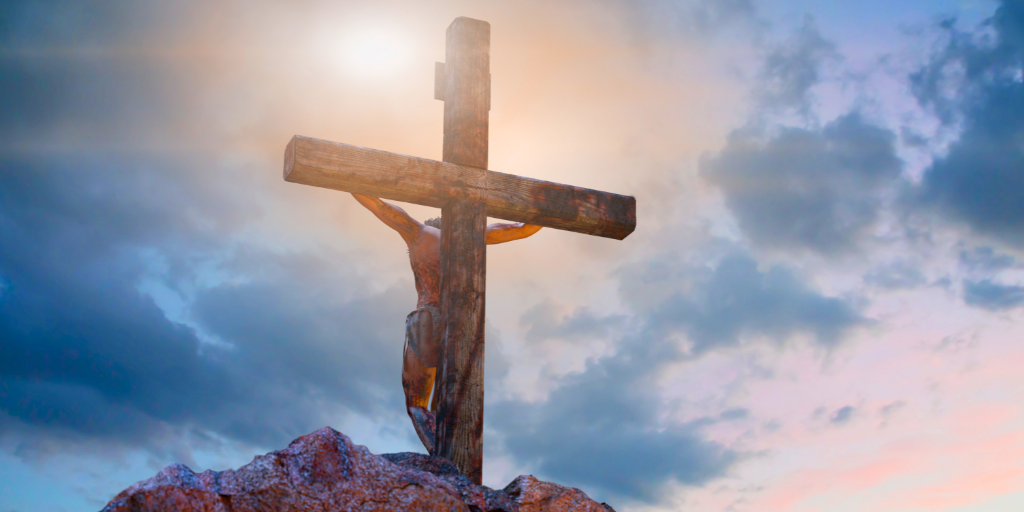
In the first of a two-part series on spiritual warfare, Jane Korvemaker considers the ways evil in the world tries to lead us away from God.
There are two equal and opposite errors into which our race can fall about the devils. One is to disbelieve in their existence. The other is to believe, and to feel an excessive and unhealthy interest in them. (C.S. Lewis, The Screwtape Letters, Preface)
What is Spiritual Warfare?
From the beginning of our Scriptures Christians have understood that there is both good and evil in the world. The question of how evil can exist in creation when God is all-powerful and all-good is called theodicy. It is a question that has been debated and discussed for ages. Thankfully I'm not entertaining that question here. Knowing that evil does exist, apart from just personal choices, its existence as objective invisible beings means that we encounter creatures that will our eternal destruction. If we do not wish this, we need to have a working knowledge of our enemies and the territory of spiritual warfare.
Jesus gives evidence of the reality of demons on multiple occasions. Two examples: during His time in the desert, Jesus endured the temptations of the devil (Mark 1:12-13, Matthew 4:1-11, Luke 4:1-13) and He cures a man with many demons (Mark 5:1-20). Perhaps you, like me, just hadn’t thought through this testament and its implications for us now in the twenty-first century. But the spiritual reality remains: It is a narrow path to follow Jesus and there is an active, invisible, and personified force of evil trying to lead us away from Christ, preying on our inclination to sin.
God is far greater than any evil being — there is no question about this. It is not evil trying to win the day over God, for Satan has been defeated. Our own souls, though, are still journeying to the fullness of salvation and we are susceptible to the influence of evil.

From Abstract to Objective
I have gone through different phases of understanding the nature of spiritual warfare. I started strongly on the cynical side of things. My earliest belief was that yes, there was evil in the world, but it wasn’t personified, as in an actual devil. Bad things happened, but the devil didn’t make them do it, so to speak. It was a choice one made to participate in evil. I believed in the presence of evil in the world, but a type of abstract influence.
When I took my moral theology class in my undergrad, I was challenged in my young beliefs about this. In particular, situations where structures were in place that perpetuated oppression (systemic/structural evil) pushed me to consider the serious objective reality of evil in our world. The perpetuation of such structure takes personal sin and creates a system where that sin can flourish, bringing others willingly or unwillingly into levels of participation in that sin. Slavery is a common example of personal sin that, when collectively held, further enables a structure for sin, for evil, to grow. For many, there is no direct choice in that sin that weighs so heavily in their lives, but they participate in it and even defend it against rational arguments.

Modern Resources
As life continued, I had occasions that challenged me even further on how I understood evil in the world. Experiences where no rational explanation seemed to exist for what occurred — personal sin could not account for it. I came across a biographical book by Matt Baglio, The Rite: The Making of a Modern Exorcist. It told the story of Father Gary Thomas, his appointment to be exorcist of his diocese, and his training in Rome for the ministry. As eerie as the stories encased in those pages were, it was also a great source of catechesis for me. It was a sobering testimony to the ministry of exorcism; it helped shape a healthier understanding and gravity.
More recently I have been following the exorcist Monsignor Stephen Rossetti on Instagram and his informative posts. I also listen to The Exorcist Files podcast. In this podcast, Ryan Bethel explores the stories of exorcisms that exorcist Father Carlos Martins has encountered (sometimes they are stories from his colleagues) through the medium of an audiodrama. As these experiences are shared, they are punctuated with explanations and catechetical information about the events by Ryan and Father Martins as the drama unfolds. The information has been very helpful to illustrate the subtleties that demons can use to exert influence on people and their lives. It also has the benefit of factually exploring each event, scrutinizing the details without minimizing the seriousness or sensationalizing the event more than the facts give.
Read Part II of this article where I'll discuss three lessons I’ve learned from these teachers and several significant things that point to devilish behaviours.
Share your thoughts with the Catholic Mom community! You'll find the comment box below the author's bio and list of recommended articles.
Copyright 2024 Jane Korvemaker
Images: Canva
About the Author

Jane Korvemaker
Jane Korvemaker loves food, family, wine, and God (perhaps not in that order). She holds a Certificate in Culinary Arts, which pairs perfectly with her Bachelor in Theology. A former Coordinator of Youth Ministry, she writes from the beautiful and cold province of Saskatchewan, Canada. She works from home and takes care of her three very hard-working children. Jane regularly blogs at AJK2.ca.


.png?width=1806&height=731&name=CatholicMom_hcfm_logo1_pos_871c_2728c%20(002).png)
Comments